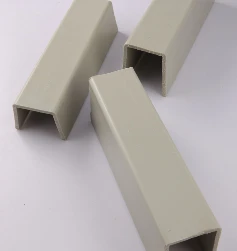des. . 11, 2024 09:56 Back to list
Understanding the Benefits and Applications of Plastic Pipe Fittings in Modern Plumbing Systems
Understanding Plastic Pipe Fittings An Essential Component in Modern Plumbing
In the realm of plumbing and piping systems, plastic pipe fittings have emerged as essential components due to their durability, versatility, and cost-effectiveness. Given the ongoing advancements in materials technology, understanding the diverse types, applications, and benefits of plastic pipe fittings is crucial for both industry professionals and DIY enthusiasts.
What Are Plastic Pipe Fittings?
Plastic pipe fittings are connectors used to join two or more sections of piping in plumbing systems. They come in various shapes and sizes and are constructed from a range of plastic materials, such as polyvinyl chloride (PVC), polyethylene (PE), and polypropylene (PP). Each of these materials has unique properties that make them suitable for specific applications.
PVC fittings, for example, are widely recognized for their strength and resistance to corrosion, making them ideal for drainage and venting systems. PE fittings are often used in water supply lines due to their excellent flexibility and ability to withstand temperature fluctuations. In contrast, PP fittings are favored in industrial settings where chemical resistance is paramount.
Types of Plastic Pipe Fittings
Plastic pipe fittings can be categorized into several types, including
1. Elbows Used to change the direction of piping, elbows are available in various angles, commonly 90 and 45 degrees. They enable smooth transitions, helping to maintain fluid flow.
2. Tees Tee fittings allow for the branching of a pipeline, connecting three sections at right angles. They are commonly used in various plumbing applications to facilitate changes in direction.
3. Couplings These fittings connect two pieces of pipe together in a straight line. Couplings can also be used to repair broken pipes, making them indispensable in maintenance.
4. Adapters Adapters are used to connect different types of piping materials or sizes, such as transitioning from plastic to metal pipes. This versatility makes them critical in mixed-material installations.
5. Caps and Plugs Caps and plugs are used to seal the ends of pipes. Caps cover the endpoint, while plugs can be inserted into the fitting to close it off. These fittings are essential for maintaining system integrity.
plastic pipe fittings

Benefits of Plastic Pipe Fittings
The increasing popularity of plastic pipe fittings is primarily due to their numerous advantages
1. Corrosion Resistance Unlike metal fittings, plastic fittings are not susceptible to rust and corrosion. This property extends their lifespan and reduces maintenance, especially in harsh environments.
2. Lightweight Plastic fittings are significantly lighter than their metal counterparts, making them easier to handle and install. This attribute also reduces transportation costs.
3. Cost-Effectiveness Generally, plastic pipe fittings tend to be less expensive than metal alternatives. Their lower initial costs and reduced maintenance requirements contribute to overall savings.
4. Ease of Installation With the availability of various joining methods, such as solvent welding or mechanical coupling, plastic fittings can be installed quickly and efficiently, even by individuals without extensive plumbing experience.
5. Chemical Resistance Many plastic materials can withstand exposure to a wide range of chemicals, making them suitable for industrial applications where aggressive substances are present.
Applications of Plastic Pipe Fittings
Plastic pipe fittings are utilized across various sectors, including residential, commercial, and industrial applications. In residential settings, they are commonly found in water supply systems, drainage, and irrigation lines. In commercial installations, plastic fittings are often employed in HVAC systems and throughout plumbing networks. Industrial applications may include chemical processing and manufacturing where durability and chemical resistance are critical.
In recent years, the demand for plastic fittings has surged as more environmentally friendly materials are being developed. Innovations in bioplastics and recycled plastics may offer even more sustainable options for future plumbing needs.
Conclusion
Plastic pipe fittings are more than just connectors; they represent an important evolution in plumbing technology. With their impressive durability, versatility, and cost-effectiveness, they have become a favorite among professionals and DIY enthusiasts. Understanding their types, benefits, and applications is key to making informed choices when planning or maintaining plumbing systems. As the industry continues to evolve, staying informed about advancements in plastic fittings will ensure optimal performance and longevity for any plumbing project.
-
HDPE Natural Sheet: Durable, Food-Grade & Versatile Plastic Solutions
NewsAug.27,2025
-
Durable Glossy PVC Rigid Sheet | Premium High-Shine Panels
NewsAug.26,2025
-
Durable PP Rigid Sheet: Lightweight, Chemical Resistant Solutions
NewsAug.21,2025
-
PVC Grey Sheet for Extraction: Chemical Resistant & Durable
NewsAug.19,2025
-
Durable PVC Pipe Fittings for Plumbing & Irrigation Needs
NewsAug.18,2025
-
HDPE Steel Belt Reinforced Spiral Corrugated Pipe | High Strength
NewsAug.17,2025

